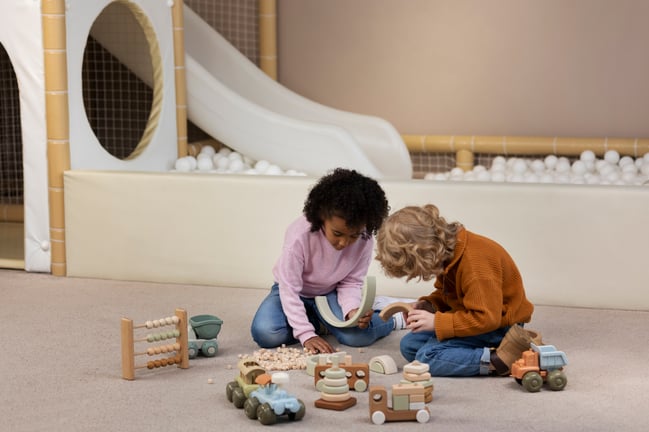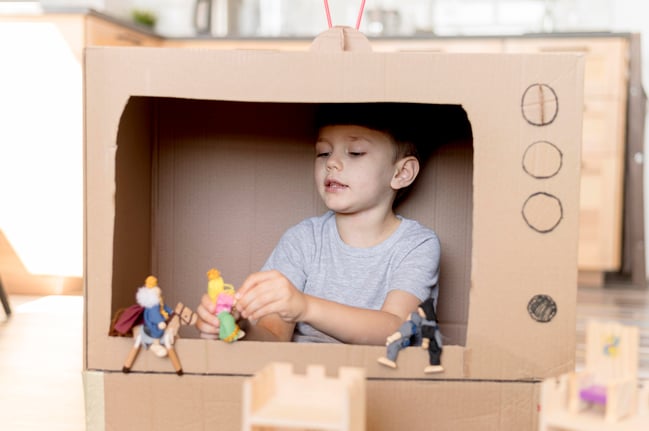
Approaches to Learning
Younger Preschoolers (33-48 months)
Components and Developmental Indicators
Younger Preschoolers (33-48 months)
Components and Developmental Indicators
Developmental Indicators
AL Goal-1: Children demonstrate curiosity and eagerness and express interest in the world around them.

Seek out a trusted person to approach something new.

Discover things that interest and amaze them and express that interest to others.

Share what they have done with others through verbal and nonverbal means (take adult or peer to the easel to see a painting).

Show interest in a growing range of topics, ideas, and tasks.
AL Goal-2: Children actively seek to understand the world around them in play and everyday tasks.

Ask questions about the people and things around them.

Use all available senses, tools, and a variety of strategies to actively explore the environment (drop objects in water to see if they sink or float).

Purposefully try different ways of doing things to see how they work (adjust blocks used as a ramp to make a ball roll faster and farther).
Developmental Indicators
AL Goal-3: Children demonstrate initiative and effort in play and everyday tasks.

Showing increasing independence and initiative when making choices ("I want to go to blocks.").

Express goals or plans and follow through on them. (“I’m going to build a really tall tower.”)

Expand self-help skills, interest, and enjoyment in doing things on their own (brushing teeth, putting on boots).
AL Goal-4: Children are engaged and maintain focus in play and everyday tasks.

Remain engaged in more complex activities they have chosen.

Focus on age-appropriate activities for a short period of time, even with interruptions (continue painting after answering another child’s question).

Maintain interest and focus and return to an activity after a break.
AL Goal-5: Children persist at challenging activities in play and everyday tasks.

When something does not work, try different ways to complete the task (when a block tower falls, try putting the blocks together in a different way to build the tower again).

When experiencing difficulty with a challenging task, ask for and accept help from peers or adults (ask for help putting materials away on a high shelf; ask a friend for help in naming an unfamiliar animal in a book).
Developmental Indicators
AL Goal-6: Children are willing to try new and challenging experiences in play and everyday tasks.

Express a belief that they can do things that are hard.

Choose to participate in an increasing variety of new experiences when offered.

Show flexibility by adapting to changes in routines and situations.

Accept new challenges and opportunities when offered.

Try things they are not sure they can do, while avoiding dangerous risks.
AL Goal-7: Children use a variety of strategies to solve problems in play and everyday tasks.

Welcome new challenges (add additional pieces to a new construction toy).

Seek and make use of ideas and help from adults and peers to solve problems.

Purposefully attempt several different strategies when encountering difficulty during daily routines or when using materials.

Talk to themselves to work through the steps to solve a problem.

Recovers from setbacks with the support of an adult ("What happened?" "It fell over." "Should we build it again?" "Yeah, it's okay, let's build it again.").
Developmental Indicators
AL Goal-8: Children engage in increasingly complex play.
AL Goal-9: Children demonstrate creativity, imagination, and inventiveness in play and everyday tasks.

Explore and experiment with a wide variety of materials and activities.

Use imagination to try new ways of doing things and work with materials in creative ways.


Experiment with language, musical sounds, and movement.




